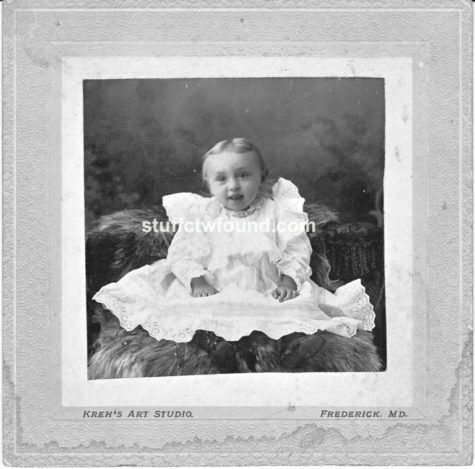 Chris Whitaker, a neighbor, retired with a plan. Most retired people’s plans are to travel or to follow up on a hobby or to have no plan at all – all of which seem to make these people happy — but as one self-educating photographer said to me, “You can show your wife just so many pictures and she can say, ‘how nice, dear,’ and then it starts to get old.” You retire, you’re finally able to do exactly what you want to do, live for yourself only, and you might run into the problem of uselessness, meaninglessness. Anyway, this was not Chris’s problem; he had a plan.
Chris Whitaker, a neighbor, retired with a plan. Most retired people’s plans are to travel or to follow up on a hobby or to have no plan at all – all of which seem to make these people happy — but as one self-educating photographer said to me, “You can show your wife just so many pictures and she can say, ‘how nice, dear,’ and then it starts to get old.” You retire, you’re finally able to do exactly what you want to do, live for yourself only, and you might run into the problem of uselessness, meaninglessness. Anyway, this was not Chris’s problem; he had a plan.
He’d go to second-hand shops – he’s near a neighborhood rich in them – and find boxes of old photos. He’d look for photos that had names written on the back, that were dated such that the people in it were clearly long gone, and that sometimes were of pretty women in fancy hats, or cute kids. Then he’d buy those photos and track down those people. That spiffy little delight in the photo up there is Lee Feete, born in 1899.
Chris tracks by beginning with the name on the photo, plus the date, and then by using publically-available sources, though some he has to pay for: newspaper databases, school yearbooks, census reports, cemetery records, Ancestry.com, military records.
He scans the photos into the computer and blows them up, and then examines the screen with a magnifiying glass. This, for instance, is Madlyn Eileen Haney as a baby.
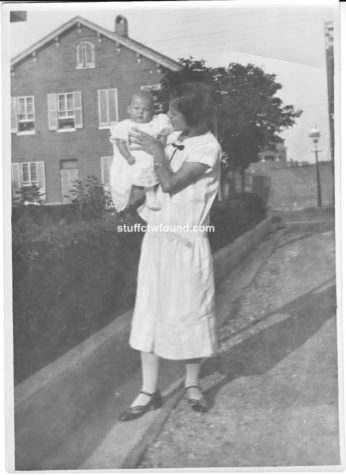 And this is Madlyn Eileen’s high school picture.
And this is Madlyn Eileen’s high school picture.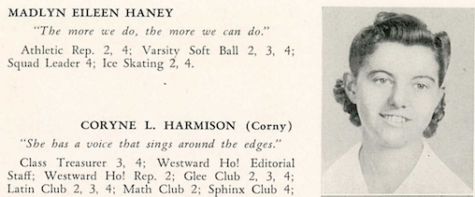 And these are people whose names Chris doesn’t know — two boys dressed up, a girl in a plaid pinafore, and an old lady with a bad knee and a crutch. But look over the one boy’s head, at the sideboard with the flowers and the trophy on it: there’s Madlyn Eileen’s high school picture.
And these are people whose names Chris doesn’t know — two boys dressed up, a girl in a plaid pinafore, and an old lady with a bad knee and a crutch. But look over the one boy’s head, at the sideboard with the flowers and the trophy on it: there’s Madlyn Eileen’s high school picture.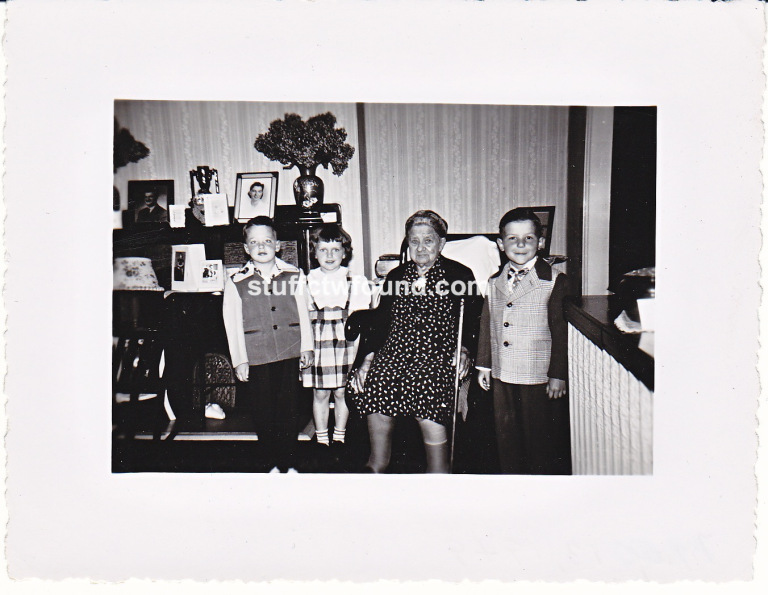
Who ARE these people? How do they know Madlyn Eileen? My fingers itch just looking at them.
For the most part, Chris figures out who they are, where they lived, where they moved to, who their parents were, what they did for a living, how many kids they had, what became of the kids, when and how they died, where they were buried. He writes the whole life up for his blog, Stuff I Found.
This is Lee Feete’s aunt, Carrie, the sister of his father, Charles. When Charles died, he left Lee an ambulance-and-undertaking business.
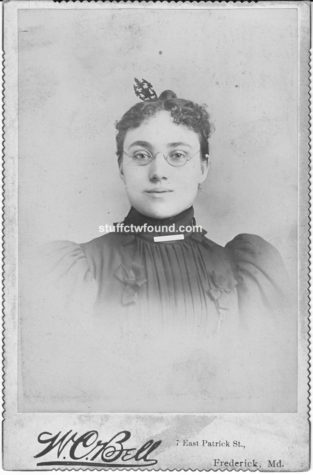 What happens after Chris posts the pictures depends on the kin. When he was first starting out, he traced an Army nurse, found a living relative on Facebook, sent the relative a private message that he’d found the nurse, and the relative blocked him. He understand the relative’s suspicions. So ever since, he never writes to the relatives, he waits for them to find him.
What happens after Chris posts the pictures depends on the kin. When he was first starting out, he traced an Army nurse, found a living relative on Facebook, sent the relative a private message that he’d found the nurse, and the relative blocked him. He understand the relative’s suspicions. So ever since, he never writes to the relatives, he waits for them to find him.
This is Samuel F. Reynolds; this is the first photo Chris united with its family. The family later went back to the store in which Chris had found Samuel F. and found at least 40 more family photos.
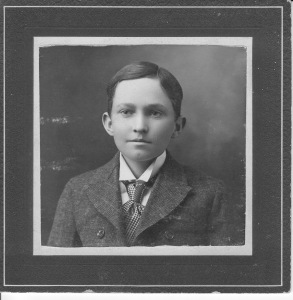 For another photo, someone wrote saying her old mother was floored to see the picture. Another person wrote how incredible the resemblance was between the writer and this old relative. “The best thing is when they write and say, ‘Holy crap, that’s my grandma!’,” Chris says. “That gives me feels.”
For another photo, someone wrote saying her old mother was floored to see the picture. Another person wrote how incredible the resemblance was between the writer and this old relative. “The best thing is when they write and say, ‘Holy crap, that’s my grandma!’,” Chris says. “That gives me feels.”
What he undersands less and what seems almost to make him unhappy is when he offers to send the picture (that he paid for and paid to identify and will send registered mail) but asks if the relative would reimburse him postage. After that, he rarely hears back. Sometimes he sends the picture anyway; mostly he shrugs it off.
After all, these pictures are unwanted. The only reason he’s able to buy them in the first place is because no one cared about them, because they were part of an estate sale and the relatives, or whoever cleaned out the dead person’s things, got rid of them.
Chris has a BA in history, though he didn’t get it until his late 20s: “I didn’t have the money to go to college,” he said, “and I didn’t have the discipline.” Since 1985, he’s been working on his own genealogy. Chris is younger than most retirees. His mother is still alive, his father and younger brother have died. He has a handful of snapshots of his own family but those relatives earlier than his parents’ generation, he said, “they were illiterate and there’s not much there. I’d like to see my grandparents’ wedding day, I’d like to see my dad in uniform.” He has children but whether he has grandchildren is not his to decide. So his own family line, or what he knows of it, could be pretty much limited to the window between his parents and his children. “I have no hope of making unification with my own family,” he says. His current goal, he says, is to return these pictures to their families: “What’s more sad than those old pictures that nobody wants?”
That’s only one of his reasons. The other one, he says, is “I love finding things out. It’s the most satisfying thing in the world. The real deal is to be the one who figured it the hell out.”
So which is it, I said, returning these pictures to their families or figuring it the hell out? Both, he said.
He said it was like my blog post about missing our neighbors, whom Chris misses too. He said I wrote that post because I missed those people and I wanted them to know that. But equally, he said, I wrote it because I knew I could do it right, I could nail it. I never told him that, he figured it out.
He had the same two reasons, he said. He was sad those pictures were sold, he wanted to bring them back to their families. Equally, he can do this thing with skill and precision and can get results; he knows how to nail it.
Form and function, substance and style, love and craft. What I think is, he’s nailed the meaninglessness problem too.
__________
Pictures all from Chris’s website, Stuff I Found.
Your story gave _me_ feels. Thank you.
I love it! Thanks, Ann, and Chris, too.